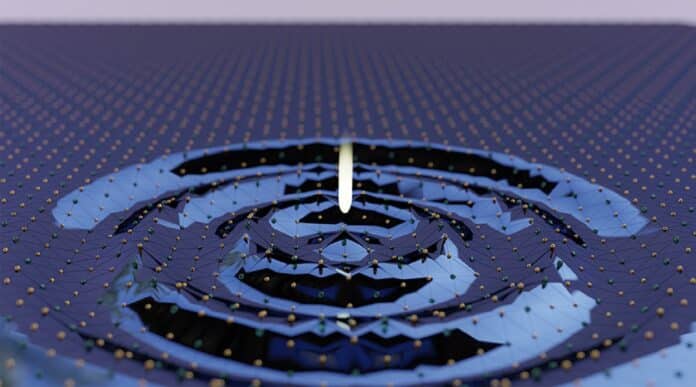Interfacial superconductivity and the quantum anomalous Hall effect have been developed by layer-by-layer material fabrication.
A new method created by Pritzker School of Molecular Engineering (PME) researchers can help determine the origin of electronic states in designed materials.
Assistant Professor Shuolong Yang and his colleagues created a method for better understanding magnetic topological insulators, which have unique surface properties that could make them useful in quantum information science technologies.
Researchers used a technique known as layer-encoded frequency-domain photoemission to send two laser pulses into a layered material and measure the energy to create a “movie” showing how electrons travel in each layer.
Yang said, “In our daily life, when we want to understand a material better to understand its composition or if it’s hollow, we knock on it. This is a similar approach at a microscopic level. Our new technique allows us to ‘knock and listen’ to layered materials, and it allowed us to show that one particular magnetic topological insulator works differently than theory predicts.”
Because many materials scientists now design and produce materials at the atomic level in a layer-by-layer process, mixing two or more components to create a new material, it is important to understand layered materials. By creating these materials from the ground up, it is possible to produce materials with novel qualities for upcoming technologies.
When scientists combined a magnetic material with a nonmagnetic substance to create the two-layered magnetic topological insulator (MnBi2Te4), they created a material with unique quantum features.
While moving around the edge of the surface, electrons preserve their energy and quantum characteristics. The transmission of data held in qubits in upcoming quantum computers may be possible via this supercurrent.
Traditional material characterization methods, such as spectroscopy, cannot distinguish between the layers due to their thinness. Previous tests have revealed that electrons may be moving around a nonmagnetic material rather than a magnetic material.
The new technology first sends out a femtosecond to understand what happens in the two separate layers. A second ultraviolet laser pulse was fired to detect the energy and momentum of electrons in a substance. The two measurements can be used together to track electron mobility throughout time.
The researcher from the University of Chicago said, “It is essentially a movie in the femtosecond timescale, And it allows us to tell which electrons are from which layer.”
When they used the procedure to the material (MnBi2Te4)(Bi2Te3), they discovered that the unusual electronic state did not exist in the magnetic layer, which defies theoretical predictions.
However, because the material’s quantum properties would be substantially improved if this supercurrent existed within the magnetic layer, Yang and his colleagues inspired the research community to re-engineer the material.
He said, “It is essentially a movie in the femtosecond timescale, and it allows us to tell which electrons are from which layer.”
This method could also be used to learn more about other unusual materials, such as topological superconductors and twistronics.
He said, “When you create new materials for future applications, it’s important to have a feedback loop between synthesis and characterization. That will guide the next iteration of synthesis and will help us fill the technological gap.”
The study was funded by the National Science Foundation and the Department of Energy.
Journal Reference:
- Lee, W., Tan, Yang, etal. Layer-by-layer disentanglement of Bloch states. Nature Physics. DOI: 10.1038/s41567-023-02008-4
